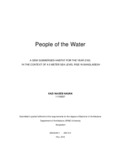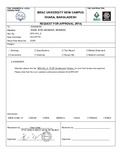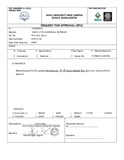| dc.description.abstract | Mankind is always evolving. Ever since man stepped into the cave from his forest dwelling millenias back, he has evolved in different ways in his desire to achieve a higher level of civilisation. That has caused him to face increasing complexities in living, and as such, their habitats too have evolved hand in hand in order to respond to such complex scenarios. As we have reached into the 21st century, we have generated near-dystopian situations that threaten our survival in many parts of the world, chief among them: climate change.
This begs the question: will climate change, and its following consequence of sea level rise in reality be as dystopian as we fear, or is it actually an incentive for man, and for his habitat to evolve to another level? Have we all this time, actually misunderstood climate change?
This thesis explores the possibilities for mankind’s survival in the context of severe climate change ‘impacts’ in the timeline of the 22nd century. This thesis questions the prevailing dystopia enshrouding climate change, and takes up the challenge for the vision of a human habitat on and within water, for the future inhabitants of Bangladesh, when the sea will devour around 25% of our landmass with a 5 meter rise in the sea level.
This thesis progressed in two phases. The first phase aimed to break the main barrier to this thesis process- our limitations to predict future time, and evolution of different elements of our lives, namely technology and human society. Regardless, a faithful study was taken up in order to conclude on projections that would help construct the year 2100 timeframe. These studies involved areas of environment, technology, economics, sociology and other life & social sciences. The first phase also looked much more closely into the engineering aspects of designing a habitat on the water. Mother nature was paid more heed to than we do now, and studies on the previously mentioned have led to the proposal of a future ecosystem that would reconcile our habitats with nature once more, just like the caves. The second phase dared on creating the dream, my own dream of our future. As such, many questions arose: how would we live? How would we travel? How would our future generations learn? Will there still be a God?
The second phase took on the buck from the first and tried to look into the future based on the current development of science and technology, to safeguard the design from turning into science fiction. As such, flying transportation, aerial construction techniques, popular use of hologram technology, etc has been predicted to occur a hundred years from now, and as such been incorporated into the future thinking. The design, in totality, concerns a habitat for a thousand people, incorporating our future understanding of housing, centers of knowledge, centers of faith, centers of cultural expressions, workplaces, shopping, etc. All these programs were attempted to be incorporated directly in the eco-cycle of this habitat, so that the spaces and the structures themselves directly generate power or clean up human waste. Predictions of the future also had one other important aspect: a deliberate intervention to envision a more ideal society for the concerned populace- the Bengali nation. As such, the vision of a future society was based on the study of the ideal Bengali habitat, which ultimately led to the conclusion that spirituality, knowledge and culture should be more intertwined in the future, just as it was in our past, for a more thoughtful functioning of society.
Lastly, this habitat attempts to mimic the behaviour and arrangement of a water lily, which stood out among other aquatic species as the closest to cue the creation of a water habitat. Even though many portions of the current Bangladeshi landmass will submerge under five metres of water, the proposed design is built for a depth of 20 meters in the Bay of Bengal. Holistically, the habitat- which is at the scale of the present understanding of a ‘neighbourhood’- incorporates basic urban functions to propose an integrated vision of the future that will tie the habitat, and its people, closely with the water. | en_US |




